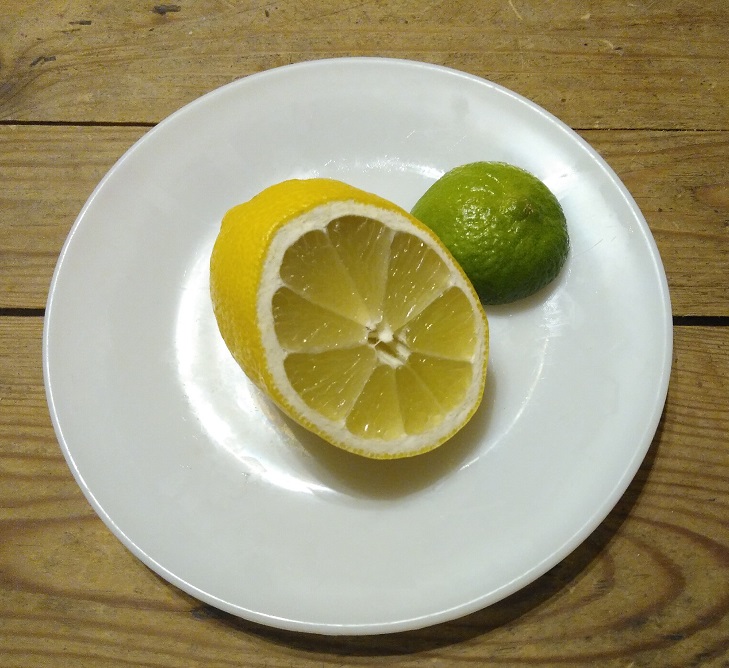 Today’s article is a warning, a warning that no matter how clear your skin gets, there are still less famous threats out there which are vital that you know about.
Today’s article is a warning, a warning that no matter how clear your skin gets, there are still less famous threats out there which are vital that you know about.
Sometimes, once you’ve discovered the world of natural acne strategies, it feels like you’re a demigod with the whole world’s knowledge at your fingertips, but if overconfident, even the smartest acne-clearing enthusiast can slip up.
You don’t want to make months of progress, the sort of progress you dreamed about for years, only to get derailed by a schoolboy error. It’s easy to avoid classic villains like sugar, but some are more deceptive, and one example can be natural topical treatments.
Specifically, they’re deceptive because some of the worst ones are extremely acne-friendly when eaten. Acne-clearing foods can have such a split personality that when people recommend them as topical treatments on forums, its easy to get excited and be sucked in. Sometimes, a food’s internal acne-clearing powers will predict its topical powers, but sometimes, they have no relation at all.
In this article, you will learn from the mistakes that others made, so that you never have to make them yourself. Here are 5 wholesome and nutritious acne-clearing foods that have a shady alter ego when applied topically.
One – olive oil
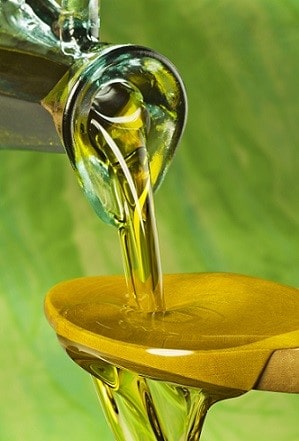 Olive oil is a culinary trend that will never die, thanks to its place in culture and the persistent popularity of the Mediterranean diet.
Olive oil is a culinary trend that will never die, thanks to its place in culture and the persistent popularity of the Mediterranean diet.
As a food, it’s just as amazing for acne as it is for your heart. Olive oil contains 38% of the RDI for vitamin E per 50 grams, deactivating acne-causing free radicals. Extra virgin olive oil contains numerous anti-inflammatory compounds like oleuropein. It even feeds your beneficial gut bacteria strains by 1) containing natural bacteria itself when minimally processed and filtered, and 2) providing fuel for existing strains with its phytonutrients oleuropein, hydroxytyrosol, and tyrosol.
Yet topically, olive oil will probably redden and irritate your skin. Why? It’s all down to oleic acid, the main fatty acid of olive oil at 70% of its total fats. Oleic acid decreases inflammation when eaten, but topically, oleic acid disrupts the human skin barrier. It weakens your epidermis and increases trans-epidermal water loss, the subtle scientific process behind dry and flaky skin.
Olive oil can cause skin conditions like atopic dermatitis and eczema, and masseurs have often been surprised at the red skin which erupts after using it on their clients. It’s the same with parents, where there’s a trend to rub olive oil into their newborn baby’s skin – doctors are having to warn parents against it.
It’s unfortunate, because olive oil’s vitamin E is useful topically, and oleuropein has studies to its name showing accelerated wound healing, re-epithelisation and collagen formation.
Read Annihilate Your Acne – learn to prevent acne and stop just treating it!
How popular is it? With olive oil, both camps are equally large: people warning against it and people enthusiastically recommending it. New people are trying this remedy every day, so the tug of war is continuing.
Any hope of salvaging it? There actually is, because the main problem can easily be diluted. Oleic acid is present in all skincare oils, but in levels like 16% in grapeseed oil, it’s perfectly healthy for your skin. By combining olive oil with a low-oleic oil, you can bring it down to the safe range. Is it worth the hassle? The vitamin E isn’t, because grapeseed oil is just as rich in it, but the oleuropein and wound healing might be worth trying.
Two – citrus fruits
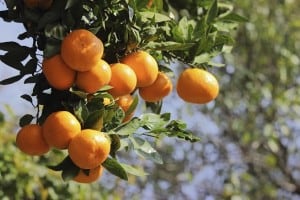 The most interesting feature of citrus fruits is calcium D-glucarate, a phytonutrient which enhances the liver’s detoxification of toxic estrogen metabolites. This will never translate into a decent topical treatment, but the orange’s main acne powers of vitamin C and antioxidants will. Using an oil to enhance the penetration makes them even stronger.
The most interesting feature of citrus fruits is calcium D-glucarate, a phytonutrient which enhances the liver’s detoxification of toxic estrogen metabolites. This will never translate into a decent topical treatment, but the orange’s main acne powers of vitamin C and antioxidants will. Using an oil to enhance the penetration makes them even stronger.
So why are citrus fruits forbidden? One word: furocoumarins.
This subset of compounds is found in celery, figs and parsley, but mainly citrus fruits. When applied to the skin, furocoumarins decrease the resistance of your cells to UVA radiation in sunlight. They weaken cell membranes, enhance free radical generation and damage your DNA.
The result is a red, rashy skin condition called phytophotodermatitis. The reaction can even darken your skin, via furocoumarin-stimulated production of melanin and melaninocytes. All citrus fruits can cause this topical reaction.
One of most annoying parts is the uncertainty over how long the sensitivity persists for: you might not be able to walk in sunlight for weeks.
You can even irritate your skin by spilling your breakfast orange juice on your arm and heading to the beach afterwards. There will be minor genetic determination of your sensitivity, and the current strength of your skin will matter, but like garlic, citrus dermatitis is a standard reaction of human skin and not an allergy. The difference to garlic is the dependence on sunlight; garlic’s burns materialise no matter what.
Is it salvageable? If the weather forecast says weeks of cloud and gloominess then you could experiment with oranges, but even if they do improve your skin tone or clear acne, you’ll never be able to make the remedy a year long staple. Furocoumarins cannot be counteracted by any known substance.
How popular is it? Lemon juice is currently on a rampage through the acne community. It’s among the most popular home remedies, and is damaging huge amounts of people. The rock solid evidence of its dangers hasn’t percolated into the acne underground yet. Oranges are less popular, but still recommended sometimes.
Three – papaya
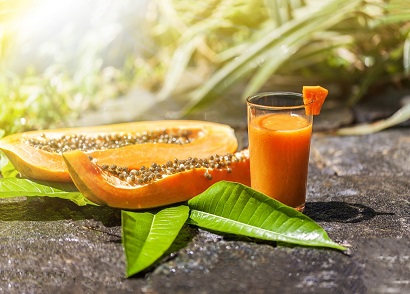 This is one remedy which every acne clearing enthusiast needs to know about.
This is one remedy which every acne clearing enthusiast needs to know about.
Papaya is in the top 50% of fruits for acne. It’s fairly rich in vitamin A for a fruit, with plenty of vitamin C and antioxidants as well, although far from the most. Papaya is also the third best source of lycopene, a strongly anti-inflammatory compound which also boosts glutathione production.
The key however, is papaine, a proteolytic enzyme which breaks down amino acids. Papaine enhances protein digestion and all of its accompanying nutrients, which is a great secret trick (don’t tell anyone!), but topically, papaine is why the hype spread. Countless articles speculate that papaine can…
ONE – dissolve dead skin cells clogging up your skin pores, cutting off new acne.
TWO – dissolve dead skin cells on the rest of your skin, exofiliating your entire face.
THREE – trigger replenishing blood flow to specific areas.
Is any of this true? The first two claims are, but papaine dissolves proteins en masse and consequently, papaine will wage war on your healthy cells too.
Your skin is made up almost entirely of protein. Your face isn’t much different to chicken breast. Papaya cannot differentiate between dead skin cells and living ones, and the result will be chaos.
Papaya also has some technical, scientific problems, namely disruption of the tight junctions in your skin barrier. Tight junctions control your skin’s permeability and keep out pollution and toxins. Papaine is known to increase TEWL, like olive oil, potentially causing dry skin. Papaine can even increase vascular permeability, the ability of molecules to move through blood vessel walls.
With papaya, the damage easily outweighs the benefits.
Is it salvageable? The theoretical strategy would be to strengthen your skin barrier, so that you can enjoy the dead skin cell dissolving powers without harm. However, papaine is so strong that nothing can overcome it.
Is it popular? Very, for papaya recommendations are an epidemic. It sounds appealing because papaya is an exotic, tropical fruit, being much less common than apples for example. The enzymes are the most popular claim, but some articles give papaya every power under the sun – anti-inflammatory, antibacterial, rich in nutrients, and more.
Most of these people are well meaning rather than sleazy and greedy – after all, it’s not like “big papaya” corporations exist. It’s just people who are so excited about natural remedies that they’ve lost their critical eye. Don’t let it happen to you!
Four – coconut oil
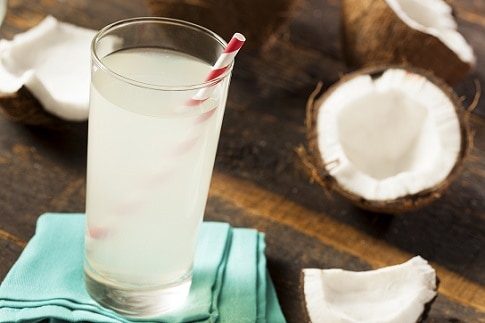 Coconut oil has come a long way over the last 10 years. The 1990s were a dark age for this natural fat, as beyond the sandy salty tropical beaches which it calls home, coconut oil could only be found in popcorn fryers in American cinemas.
Coconut oil has come a long way over the last 10 years. The 1990s were a dark age for this natural fat, as beyond the sandy salty tropical beaches which it calls home, coconut oil could only be found in popcorn fryers in American cinemas.
Yet in 2019, coconut oil is endorsed by numerous celebrities, and it’s a weight loss sensation. As a food, coconut oil is indeed fantastic for acne. It succeeds simply by not being soybean oil or corn oil (very dodgy foods) but also contains the highly anti-inflammatory lauric acid, which forms 49% of its total fats.
Those powers also work when applied topically. What’s more, lauric acid is antibacterial, and specifically tested against p.acnes bacteria in several studies. The interesting part is that p.acnes was more vulnerable than two other skin bacteria strains which were tested. Lauric acid can also suppress the bacteria behind the inflammatory skin condition atopic dermatitis: staphylococcus aureus.
Yet the truth is that none of those powers matter. Why? Because coconut oil has a 4/5 ability to clog your skin pores.
Its comedogenic rating is equal to cocoa butter, which also scores 4/5. It’s far worse than argan oil (0/5), grapeseed oil (2/5) or tamanu oil (2/5).
That’s why if you browse user reports on the internet, you’ll see the same tale about a red, messy explosion of acne. The same scenario will play out whether you try coconut oil for acne or as a moisturiser.
Recommended – the 7 greatest natural topical treatments for acne
Is it salvageable? The answer is currently a mystery. Combining coconut oil with a pore-friendly oil like argan oil might bring down the overall comedogenicity, allowing you to destroy p.acnes. The antibacterial powers are particularly strong and it would be excellent if we could access them. However, the clogging might require only small quantities of coconut oil.
If we’re lucky, then a study will analyse this question one day. Whether your pores get clogged also depends on your genetics as some people’s skin pores literally have a smaller diameter than others.
Is it popular? It is, but word of the pore-clogging powers is slowly spreading through the acne underground. The word is spreading significantly faster than the truth about lemon juice.
The bigger problem is reading magazine articles where celebrities endorse coconut oil, having a brainwave, and experimenting with coconut oil unawares. Ignoring these articles would be particularly important if you’re only a moisturising fanatic, as you might have your first new pimples in years if you choose coconut oil.
Five – garlic
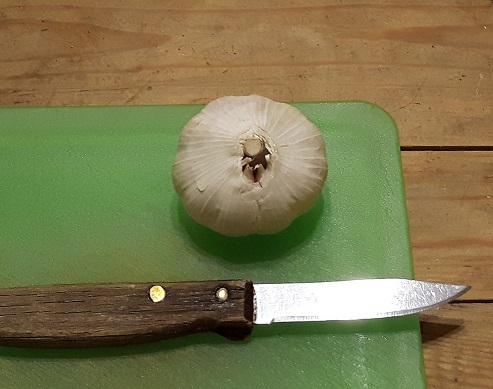 Another culinary staple which is so healthy that it’s very tempting to try topically.
Another culinary staple which is so healthy that it’s very tempting to try topically.
For acne, garlic has a great profile of powers owing to its various sulphurous compounds. 1,2-vinyldithiin and thicremonone are both strongly anti-inflammatory compounds. The sulphur itself is beneficial, since it’s an ingredient for glutathione, which is both an antioxidant and a detoxification agent.
This rat study found that garlic boosted brain levels of 5HT or serotonin, the happiness neurotransmitter which antidepressants act on, which could filter through into lower stress. Garlic’s fructans and fibers can also boost the beneficial gut bacteria family bifidobacterium (study).
But like olive oil, garlic has a specific compound with two personalities, a compound called allicin:
INTERNAL – allicin is broken down by stomach acid into sulfenic acid, an immensely powerful antioxidant.
EXTERNAL – allicin disrupts cysteine proteins in epidermis cells, causing damage to the skin barrier and chemical burns.
Garlic is notorious for its chemical burns and there’s no easy way around it. The only evidence deeper than the endless user reports is the library of scientific studies. The burns aren’t dependant upon an allergic reaction, the burns are a standard physiological reaction of human skin.
Topical garlic does have some interesting antibacterial properties, but these relate to the very compound behind the burns, allicin. All this makes garlic off limits as a topical acne treatment.
The top 6 vitamins and minerals for clearing acne forever
How popular is it? Garlic is much less popular than olive oil, but still enthusiastically recommended on obscure skincare websites and message boards. In the last year, there’s almost certainly people around the world who have unknowingly tried it.
Hope of salvaging it? No, because unlike the oleic acid in olive oil, the cysteine disruption and burning is impossible to counteract easily. What’s more, garlic’s benefits translate poorly to the skin anyway. Glutathione must be increased within the body and allicin has to be digested to act as an antioxidant.
Conclusion
The ability to cure acne from the inside out does not guarantee that a food is a great topical treatment, or even a safe one.
Ignoring side effects, some powers fundamentally don’t translate well to the skin, like garlic’s sulphurous compounds and their role in glutathione formation.
The opposite scenario can also apply. Grapeseed oil is a soothing and safe oil with a low chance of clogging pores and little oleic acid. I recommend it because of its high linoleic acid content and its vitamin E, which makes it a great replacement for olive oil…
…yet as a food, grapeseed oil will probably cause acne, because its omega 6 fats crank up inflammation like nothing else.
Some foods can be equally great too. Strawberries flood your body with vitamin C, but also enhance your UV radiation defences when applied topically. Ginger contains anti-inflammatory compounds like zingerones and gingerols, activities which this human study detected again during topical application.
Every plant or remedy has its own characteristics; there are no hard rules.
NEXT: read the 167 page eBook and get the ultimate diet for acne
Thanks for reading!
